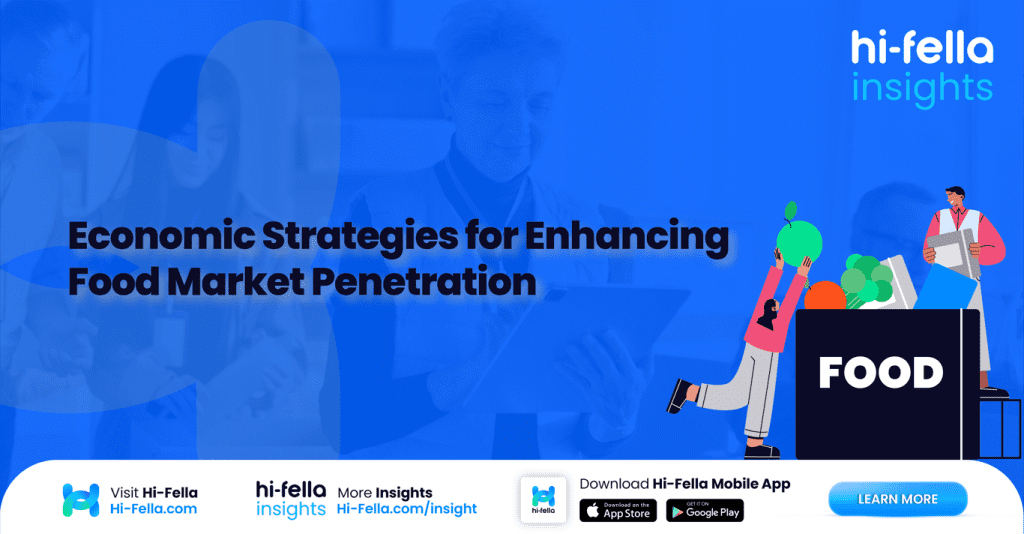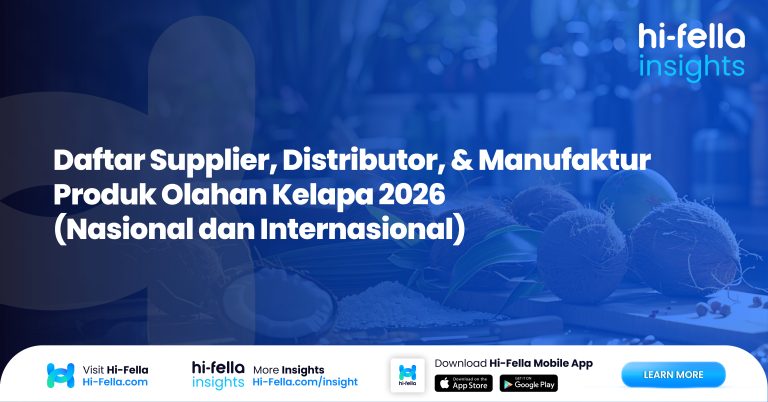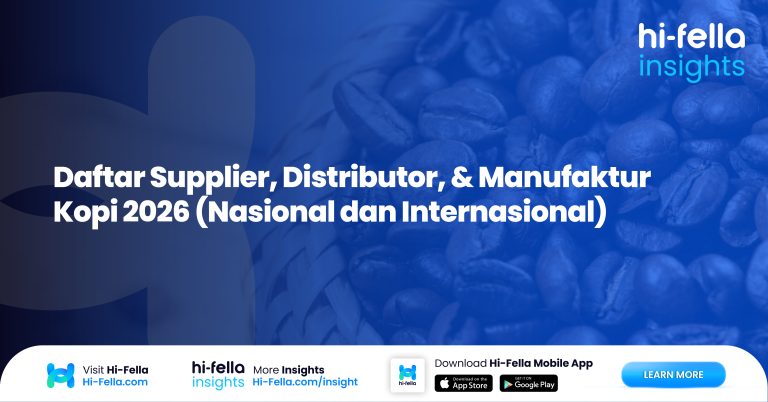Breaking into new food markets isn’t just about having a great product. It’s about understanding how markets behave, what drives buyer decisions, and how to strategically position your brand, pricing, and distribution to gain traction.
Whether you’re a local food manufacturer aiming to enter international shelves, or a regional supplier looking to deepen your footprint, the key is to approach market penetration with structured economic thinking—not just reactive marketing.
Let’s unpack some of the most effective economic strategies to increase market share and build sustainable growth in competitive food markets.
Understanding Market Structures and Entry Dynamics
Before launching a product or entering a new food market, one of the most critical decisions you can make is understanding the market structure you’re walking into. Not all markets behave the same. Some are dominated by price competition and high interchangeability, while others thrive on differentiation, lifestyle branding, and emotional connections with consumers. For example, if you’re entering the cooking oil segment, you’re competing in a perfectly competitive or near-perfect market—where most products look, feel, and function the same. In these environments, price, volume, and distribution efficiency are the main drivers of success. You win by being cheaper, faster, and more available than the next guy.
In contrast, markets that fall under monopolistic competition—such as organic snack foods, functional beverages, or artisanal condiments—are more fluid. Here, consumers don’t just buy based on price. They’re influenced by perceived quality, brand story, packaging design, sustainability claims, or health benefits. These are markets where you can carve out a niche and command a higher price, even if the functional difference between your product and a competitor’s is small. The entry strategy here leans heavily on positioning, storytelling, and targeted messaging—because your goal isn’t to beat everyone on cost, it’s to stand out meaningfully.
Each market structure requires a different kind of economic logic. In commoditised markets, your unit economics need to be ruthlessly tight. Margins are thin, so success often comes down to how well you manage procurement, logistics, production costs, and scalability. You may need to invest in supply chain automation, long-term contracts with raw material suppliers, or bulk distribution partnerships to stay competitive. On the other hand, in more fragmented, brand-led markets, the playbook focuses on customer acquisition costs, retention, and lifetime value. You’re optimizing not just for cost per unit, but for loyalty and brand equity over time.
A crucial part of navigating these dynamics is understanding pricing elasticity and consumer behaviour within your target segment. Are your customers price-sensitive, or are they willing to pay a premium for ethical sourcing or clean labels? Is the market saturated with similar products, or is there white space for a new offering? Also, be aware of regulatory frameworks. For example, plant-based meat products might face stricter labelling rules in certain markets, while low-sugar claims might carry certification requirements in others. Your entry strategy should take into account both economic conditions and market access limitations—from tariffs to shelf placement rules.
In summary, market structure isn’t just an academic term—it shapes your entire go-to-market model. The same product might require radically different strategies in different regions or channels depending on the competitive landscape. You can’t afford to apply a one-size-fits-all approach. That’s why smart exporters and food entrepreneurs invest time upfront in analysing the market dynamics—before committing capital or production. And when you’re ready to connect with distributors, buyers, or showcase your product at exhibitions tailored to your market category, hi-fella provides the tools and trade networks to help you do it with precision, not guesswork.
Penetration Pricing and Elastic Demand
If you’re entering a crowded market and need to drive initial adoption, penetration pricing can be an effective short-term strategy. This involves setting a lower price point than competitors to attract attention, stimulate trial, and gain shelf space. But it only works when:
- Your product is highly substitutable
- Customers are price sensitive
- You can manage lower margins in the short term
The key here is knowing your cost structure and break-even point. Penetration pricing only works if you have enough operational efficiency to absorb the margin pressure until your brand equity builds.
On the flip side, in markets with inelastic demand (where buyers aren’t very price-sensitive), it may be more effective to enter with value-based pricing, especially if you’re offering health, sustainability, or premium-quality attributes.
Product Differentiation and Perceived Value
Differentiation is an economic lever that allows you to escape price wars. When buyers perceive your product as unique—due to taste, ingredients, sourcing, packaging, or ethical credentials—they’re more likely to pay a premium and stay loyal.
This is especially effective in markets where brand trust and product storytelling matter. Take, for example, an Indonesian tempeh producer trying to enter European markets. Competing on price with local soy products would be tough. But by positioning the product around cultural heritage, fermented nutrition, and gut health benefits, the producer builds a niche advantage that goes beyond price.
Economic theory tells us that consumer utility isn’t just functional—it’s emotional, cultural, and contextual. Smart differentiation taps into those intangible sources of value to deepen market presence.
Channel Economics and Distribution Leverage
How your product reaches the market is just as important as what it is. Distribution strategy plays a huge role in market penetration. Direct-to-retail, e-commerce, foodservice, and institutional channels all come with different cost structures, margins, and risk levels.
If you’re a small supplier, going straight to large retailers might look appealing—but it comes with high entry barriers, slotting fees, and delayed payments. On the other hand, building traction through specialty stores, pop-ups, or online platforms may offer higher margins and lower acquisition costs, even if the scale takes longer.
Understanding channel economics—like average order size, fulfillment costs, and customer lifetime value—helps you allocate resources to the channels that offer the best return on penetration efforts.
Strategic Use of Trade Incentives and Partnerships
Many countries offer trade incentives, grants, or export support schemes for food businesses entering new markets. These might include tax relief on export earnings, subsidies for international exhibitions, or low-interest financing for packaging compliance upgrades.
Tapping into these support structures improves your cash flow and reduces your risk when entering foreign markets. It also helps you meet import requirements such as halal certification, organic labelling, or country-of-origin documentation—which are often costly upfront but essential for shelf access.
Beyond policy tools, partnerships with distributors, local agents, or co-branding with known entities can fast-track your market penetration. Economically, it’s about leveraging other players’ existing infrastructure and reputation instead of building from scratch.
Brand Localisation and Cultural Fit
Economic penetration isn’t just math—it’s culture. One of the most overlooked strategies is localising your brand without diluting it. That means adapting packaging, language, portion sizes, or flavour profiles to suit local preferences while maintaining core brand identity.
Consider this: a beverage brand known for its bold ginger taste may find success in one region, but needs a milder version for another market with lower spice tolerance. Adjusting for this nuance improves consumer acceptance and reduces product returns—key cost factors in new market entry.
Localisation also shows cultural respect, which builds intangible goodwill—a real economic asset when you’re new and unknown.
Market Intelligence and Demand Forecasting
Economics relies heavily on data-driven forecasting. Entering a market without clear demand insights is like launching a product blindfolded. Smart businesses invest in market research, competitor audits, and pilot programs before committing large volumes.
Using tools like POS data, export intelligence platforms, and even Google Trends can help you map demand cycles, seasonal variation, and emerging preferences. This minimises overproduction, stockouts, and markdowns—making your entry both efficient and economically sound.
It also helps in setting realistic targets for ROI, pricing strategy, and product assortment. In short, smart market penetration requires a dashboard—not a dartboard.
Ready to Go Deeper, Smarter, and Further?
Scaling into new food markets doesn’t have to be risky guesswork. When grounded in economic logic—combined with creativity and cultural intelligence—market penetration becomes a growth lever, not just a marketing plan.
And if you’re ready to showcase your products on international platforms, connect with buyers, and tap into export opportunities, hi-fella is the platform built to take you there. From trade exhibitions to importer matchmaking and compliance insights, hi-fella supports your expansion every step of the way.
Because successful market penetration isn’t about how loud you shout—it’s about how well you read the market, price your value, and move with intention. And hi-fella is here to help you do exactly that.








